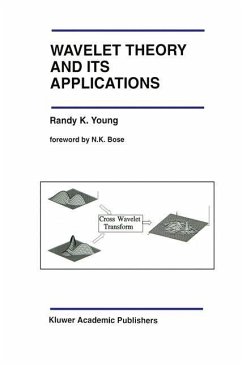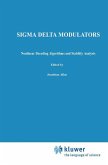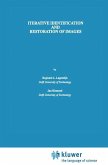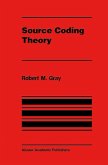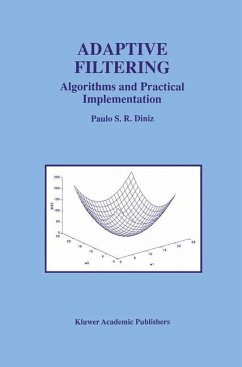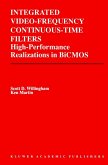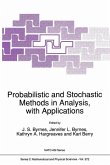This book reviews, extends, and applies wavelet theory, concentrating on the practical applications. Many pictures provide visualizations of wavelet theory and its new extentions, as well as relationships to established concepts. Wavelet theory is integrated with other general theories, including linear systems theory and template matching or matched filtering. These relationships create analogies with related research and connections to practical applications. In addition, by demonstrating the effectiveness of wavelet theory in these general applications, many other specific applications may be improved. Temporal and spatial signals and systems are considered. The properties of the wavelet transform representation are sensitive to the chosen mother wavelet (the kernel of the wavelet transform, analogous to the exponential function in a Fourier transform). These properties are examined and techniques for analyzing these sensitivities are presented.
Wavelet theory is extended with the new mother mapper operator that efficiently maps a wavelet transform with respect to one mother wavelet to a new wavelet transform with respect to a different mother wavelet. The mother mapper efficiently calculates concise wavelet representations that utilize multiple mother wavelets. The mother mapper operator is also employed to efficiently compute 'cross' wavelet transforms or wideband cross ambiguity functions; these 'cross' operators extract the 'commonalities' between two signals or systems to determine the existence or structure of these commonalities.
An original system model, the space-time varying (STV) wavelet operator, is constructed with wavelet theory. As a special case, the STV model can represent linear time-invariant (LTI) systems. LTI systems are represented by the one-dimensional (1D) impulse response. This one-dimensional impulse response is the center slice of the two-dimensional (2D) STV representation. Both the LTI and STV models can also be made to vary with time (leading to 2D and 3D models, respectively). The advantages of the new STV model are expolited to characterize or image an environment.
Physically, the STV wavelet operator creates an output by summing weighted, scaled and translated replicas of the input; these weights are the new system model. This is analogous to the LTI system model in which the output is a weighed sum of translated replicas of the input signal; with the weights being the LTI system model, the impulse response.
Obviously, time scaling is the additional feature of the STV wavelet representation and is also the key to efficient representations of the wideband reflection or scattering process and improved estimation gains. By including the scaling operation as part of the STV system model (that is independent of time), the estimation process for this new system model can account for the linear time variation of the system and thus, have a valid model over a long interval of time. By estimating over a long interval of time, more robust and higher gain and resolution estimates can be formed.
The continuous wavelet transform has deep mathematical roots in the work of Alberto P. Calderon. His seminal paper on complex method of interpolation and intermediate spaces provided the main tool for describing function spaces and their approximation properties. The Calderon identities allow one to give integral representations of many natural operators by using simple pieces of such operators, which are more suited for analysis. These pieces, which are essentially spectral projections, can be chosen in clever ways and have proved to be of tremendous utility in various problems of numerical analysis, multidimensional signal processing, video data compression, and reconstruction of high resolution images and high quality speech. A proliferation of research papers and a couple of books, written in English (there is an earlier book written in French), have emerged on the subject. These books, so far, are written by specialists for specialists, with a heavy mathematical flavor, which is characteristic of the Calderon-Zygmund theory and related research of Duffin-Schaeffer, Daubechies, Grossman, Meyer, Morlet, Chui, and others. Randy Young's monograph is geared more towards practitioners and even non-specialists, who want and, probably, should be cognizant of the exciting proven as well as potential benefits which have either already emerged or are likely to emerge from wavelet theory.
Wavelet theory is extended with the new mother mapper operator that efficiently maps a wavelet transform with respect to one mother wavelet to a new wavelet transform with respect to a different mother wavelet. The mother mapper efficiently calculates concise wavelet representations that utilize multiple mother wavelets. The mother mapper operator is also employed to efficiently compute 'cross' wavelet transforms or wideband cross ambiguity functions; these 'cross' operators extract the 'commonalities' between two signals or systems to determine the existence or structure of these commonalities.
An original system model, the space-time varying (STV) wavelet operator, is constructed with wavelet theory. As a special case, the STV model can represent linear time-invariant (LTI) systems. LTI systems are represented by the one-dimensional (1D) impulse response. This one-dimensional impulse response is the center slice of the two-dimensional (2D) STV representation. Both the LTI and STV models can also be made to vary with time (leading to 2D and 3D models, respectively). The advantages of the new STV model are expolited to characterize or image an environment.
Physically, the STV wavelet operator creates an output by summing weighted, scaled and translated replicas of the input; these weights are the new system model. This is analogous to the LTI system model in which the output is a weighed sum of translated replicas of the input signal; with the weights being the LTI system model, the impulse response.
Obviously, time scaling is the additional feature of the STV wavelet representation and is also the key to efficient representations of the wideband reflection or scattering process and improved estimation gains. By including the scaling operation as part of the STV system model (that is independent of time), the estimation process for this new system model can account for the linear time variation of the system and thus, have a valid model over a long interval of time. By estimating over a long interval of time, more robust and higher gain and resolution estimates can be formed.
The continuous wavelet transform has deep mathematical roots in the work of Alberto P. Calderon. His seminal paper on complex method of interpolation and intermediate spaces provided the main tool for describing function spaces and their approximation properties. The Calderon identities allow one to give integral representations of many natural operators by using simple pieces of such operators, which are more suited for analysis. These pieces, which are essentially spectral projections, can be chosen in clever ways and have proved to be of tremendous utility in various problems of numerical analysis, multidimensional signal processing, video data compression, and reconstruction of high resolution images and high quality speech. A proliferation of research papers and a couple of books, written in English (there is an earlier book written in French), have emerged on the subject. These books, so far, are written by specialists for specialists, with a heavy mathematical flavor, which is characteristic of the Calderon-Zygmund theory and related research of Duffin-Schaeffer, Daubechies, Grossman, Meyer, Morlet, Chui, and others. Randy Young's monograph is geared more towards practitioners and even non-specialists, who want and, probably, should be cognizant of the exciting proven as well as potential benefits which have either already emerged or are likely to emerge from wavelet theory.

